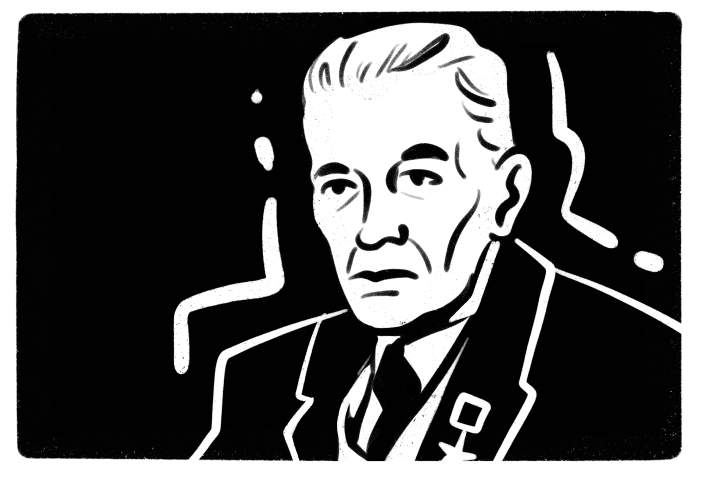The Dark Side of Inventions: Frauds and Exposures
Science is the most important, beautiful, and necessary link in human life. It is essential for the people of any country to avoid becoming a colony. It surpasses time and imagination. The purpose of science is to serve people. But it doesn’t always work out that way…
Science is predominantly a domain of people, and therefore, of human passions. Scientists are often perceived as moral exemplars of the modern world. Efforts to free scientific knowledge from bias have created the image of science as an absolutely objective field of knowledge. However, in recent years, more and more scientific publications are being retracted due to errors, which alarms the professional community. Science is not immune to human flaws; it also involves deceptions, hoaxes, and frauds.
What drives scientists to fabricate their results? Is it the desire for fame, the wish to grab a large sum from a substantial grant, or something else?
Let’s try to understand by examining specific examples.
In Pursuit of Darwin
The Piltdown Man is an archaeological hoax that occurred in the early 20th century. In 1912, remains were found in Piltdown, England, which were presented as a “remarkable discovery”—the missing link in the evolution between apes and humans. The sensation was a piece of jawbone claimed to belong to a primitive human ancestor. All would have been well, but…

In 1953, analysis showed that the jawbone was indeed part of a modern orangutan’s skull, while the skull belonged to a modern human. They had simply been adjusted to fit together.
There were many inconsistencies with this discovery, notably the presence of very “un-ape-like” molar teeth (which primates definitely do not have).
This case became known as one of the greatest archaeological hoaxes in history. Despite the absurdity of the situation, the fraud proved useful for science by sparking debates and discussions about human origins.
So why did the scientific community so readily accept this dubious discovery? There were quite understandable reasons. The amateur archaeologist Dawson was not a minor figure in paleontology. One of the dinosaur species was even named after him. This fact, along with the presence of many other bones from Pliocene and Pleistocene deposits nearby, convinced scientists of the discovery’s authenticity. And, of course, the long-awaited confirmation of Darwin’s theory played a significant role. Science wanted it—Dawson delivered.
In Pursuit of Gravity
Since the time of Icarus, people have wanted to feel like birds and touch the clouds. They wanted to invent something that would allow them to fly farther and higher.
In 1996, NASA specialists did just that—they went further. They decided that building a starship was too simple and undertook the development of a device that was supposed to generate an antigravity field. Mark Millis’s project took a full 6 years and about $1.5 million. Of course, nothing substantial came out of this endeavor. And it couldn’t have—after all, the universal gravitational constant is a constant, so that some “geniuses” can’t change its value.

Despite being fired from the space agency in 2010, Mark Millis did not lose his faith. Fully convinced of the correctness of his ideas, after leaving the space agency, Millis created a non-profit organization. The goal remained the same—to create a star engine.
Who knows, maybe in about 100 years, gravity will cease to be so relentless, and we will finally fly on antigravity starships.
In Pursuit of a New Heart
Ah, those magical stem cells: they are associated with dreams of eternal youth and immortality.
In 2014, Japanese geneticists claimed they had succeeded in creating stem cells from ordinary ones. All that was needed was an acidic environment and high pressure or heating. The discovery was sensational, as almost all other body cells can be grown from stem cells. For example, you take a piece of skin and grow a new heart. Simple!

Yes, the miracle was so close… but the Japanese researchers who claimed to reprogram mature cells into stem cells in an acidic environment were caught fabricating experimental data.
In Pursuit of New Sensations
In 1998, an entrepreneur named Michael Fenne founded a company called Pixelon, promising to bring high-quality streaming video to every home.
Assembling a team of engineers and convincing investors to fund the project, Fenne raised $30 million and threw a lavish party in Las Vegas to mark the launch of the company. However, the live broadcast of the event ended in disaster, leaving viewers disappointed. Instead of the event, they saw nothing but an error message on their screens.

The new era of streaming video did not culminate in the grand party in Las Vegas with a live broadcast as expected, but in a scandalous exposure of a fraudster! Michael Fenne turned out to be not who he claimed to be, but David Kim Stanley, a known con artist wanted for securities fraud.
So, investors not only lost their money but also experienced a real shock! As they say, only in the movies do such twists happen! Quite a show.
In Pursuit of Popularity
“One, two, three – and here she is, Elizabeth Holmes. The Blood Queen of Silicon Valley in California with her project Theranos.
Like in a fairy tale, the American easily raised hundreds of millions of dollars for her project and became the queen of the tech world. She was the owner of $4.5 billion and held the top spot in Forbes magazine’s list of the richest self-made women in America.

Her image was not just the black turtleneck, but also the deep voice and hypnotic, unblinking gaze, as if she came from the world of Steve Jobs. Theranos’ grand promises to release a compact analyzer capable of quickly conducting complex tests from a tiny volume of blood – a drop taken from a finger – led to huge investments in Holmes’ company and extremely high valuations. Indeed, why would you need a bunch of markers, chemical reagents, and other lab equipment?
But it turned out that this technology never existed, and her entire business was just a lie. In the end, Holmes was found guilty of defrauding investors and sentenced to 11 years and 3 months in prison.
What was the secret of their trust in this project and in Holmes herself, investors and the public never understood. The black turtleneck, the deep voice, the aura of mystery? Or was it the manipulation and the image of Steve Jobs, the man who sold the world the iPhone, that played a fatal role in this ‘bloody’ affair?”
In Pursuit of Free Electricity
March 23, 1989, became a day when science met its new idol. The University of Utah shocked the scientific world with a press release stating that “two scientists had initiated a self-sustaining nuclear fusion reaction at room temperature.”

It seemed that science had finally outpaced fiction and brought our world into an era of free energy and endless resources. But it was merely the cold fusion of ordinary scientific fraud.
The scientists, Martin Fleischmann and Stanley Pons, became stars of the scientific world and went down in history as those who promised us a miracle but instead delivered disappointment. Their claim of cold fusion sparked a storm of emotions and hopes. State legislators urgently allocated $5 million to establish the National Cold Fusion Institute, and the university requested another $25 million from the U.S. Congress. Thus began one of the most sensational scientific scandals of the 20th century. The press and television quickly spread the news around the world.
It turned out that it was all an illusion. Despite many scientists attempting to replicate the experiment, the results were never confirmed.
In Pursuit of Immortality
Russian doctor Alexander Bogomolets, a man with ambitions, decided that people should not die young. He set out to study the endocrine and nervous systems to find the key to eternal life. Perhaps he even hoped to receive an Order “For the Fight Against Immortality,” but it didn’t work out because the researcher himself died at the age of 65.

The idea of immortality fascinated Joseph Stalin, who was very eager to learn the secret of life-extending drugs. Most likely, if Bogomolets had been alive, the leader of the world proletariat would have had him executed. Stalin’s disappointment was great when he realized that the scientist had deceived everyone, leaving no secret behind.
As a result, all rehabilitation centers and scientific programs were immediately abandoned.
In Pursuit of Sensations
Often, society corners itself. People want miracles and progress. And it doesn’t matter how. They want it urgently, categorically. In the pursuit of fame, recognition, and often enrichment, amateur inventors and, unfortunately, sometimes scientists, turn themselves inside out to invent something. Especially when discoveries are expected at the state level. Thus, some demand, others invent, and then everyone believes.

The economy of modern science is largely built on the grant system, provided by the government, private foundations, and corporations. Securing funding for research is crucial: it is necessary to ensure the availability of facilities and equipment, as well as to pay scientists and their assistants. This process takes a lot of time and effort, and sometimes it is easier to tweak the results of the work to speed it up.
It is not about the greed of scientists but about the system of financial distribution in the scientific community. Organizations that provide grants usually attract research that can be described as groundbreaking. Funding for projects that simply continue the previous line of work is usually less.
High-profile hoaxes in the field of inventions remind us once again that even the most beautiful promises can be just empty words, and real discoveries require careful verification and scientific evidence. Science is a strict discipline, and a fact is recognized as true only after multiple thorough checks, tests, analysis, and recognition by the scientific community.
Falsification of scientific work results has become a separate area of research in the modern scientific community. Research is dedicated to identifying fake results both before and after publication. For example, at Cornell University in New York, they have learned to determine the authenticity of work with up to 70% accuracy based on the vocabulary used: works with falsified results often use emotionally charged words like “extremely” or “highly.” There are also proposals for experts to discuss research results online before publication. Although the proportion of fake publications is relatively small, high-profile cases of scientific data falsification and negative trends threaten the reputation of science as a bastion of objective knowledge.
Oddly enough, the ethics of the scientific community are such that fraudsters can become elusive. The principle of “trust but verify,” on which it is based, often works only in terms of trust. Scientists are happy for their colleagues’ successes because others’ work can form the basis for new research and provide interesting projects for students and lab technicians. The success or failure of such work will be treated as the conclusions of new research, especially if the results do not directly indicate mistakes made earlier by other scientists.
Perhaps one day science will truly outpace fiction, but until then, we should be cautious and not believe baseless promises of stars from the sky, immortality, or all-powerful medicine.
Scientists have decoded the human genome. We’ve decoded the genome of interest. Only pure science and facts.
Thank you!




